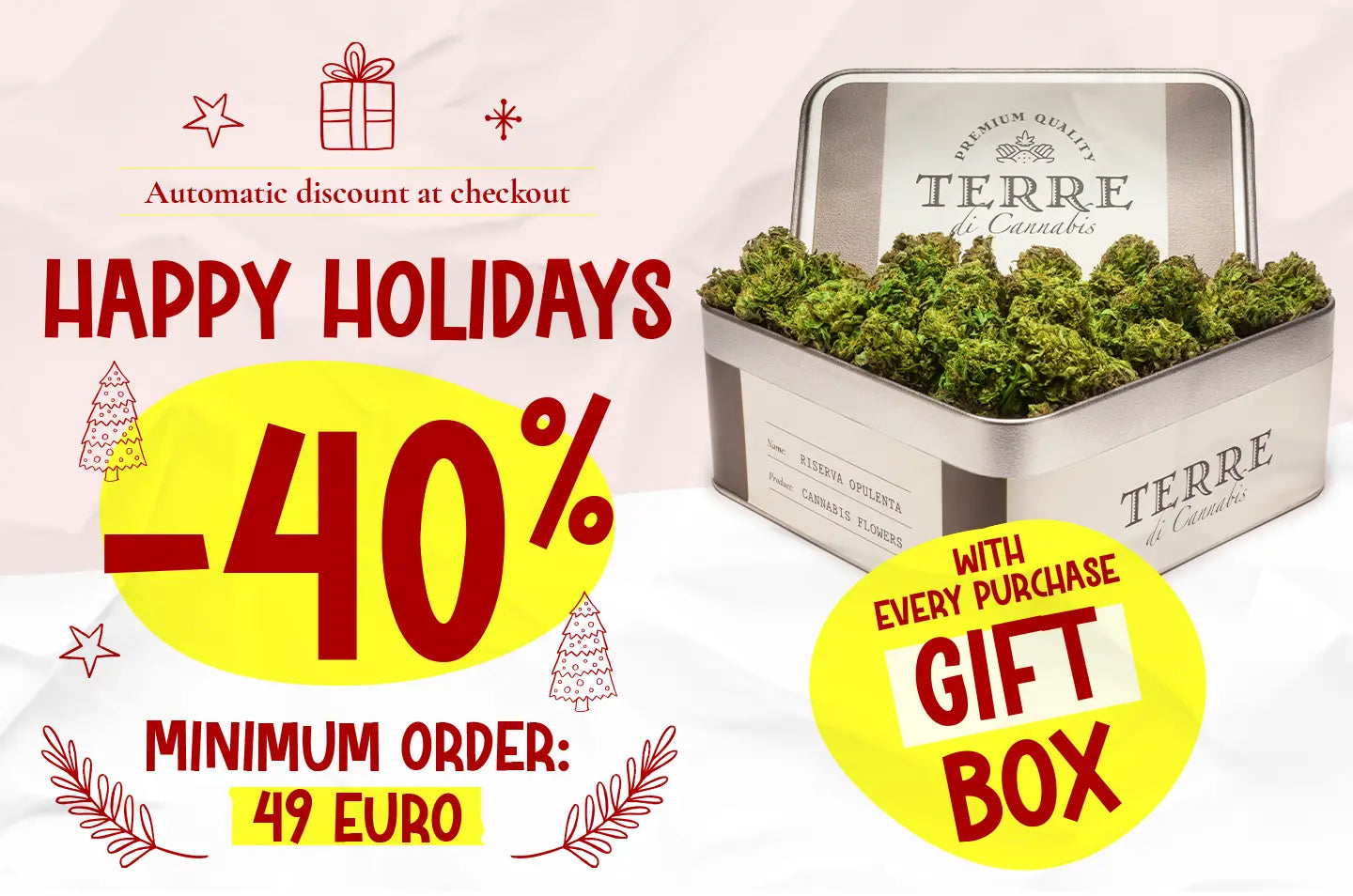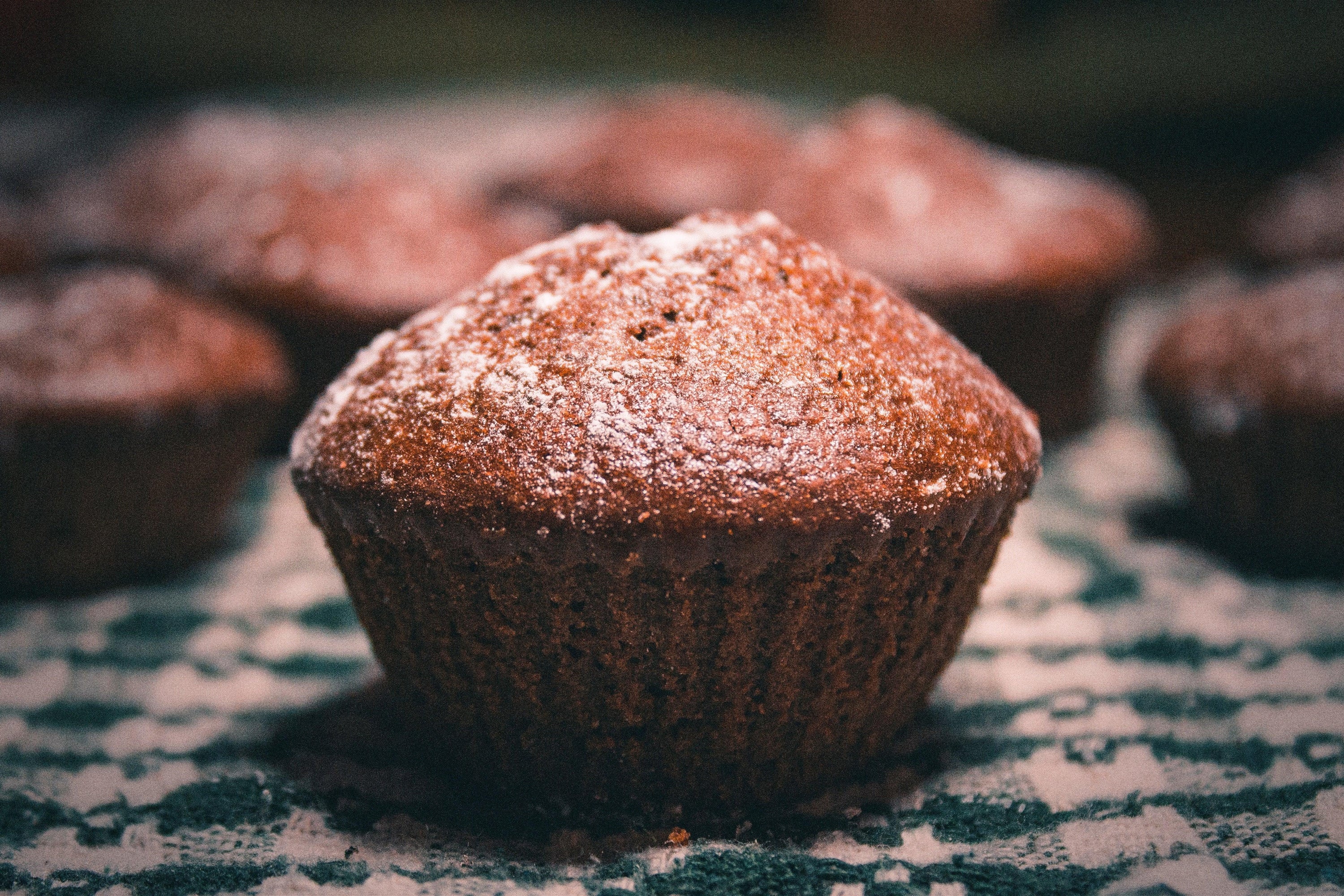In this article we will tell you how the famous marijuana muffins are prepared but also about the use of hemp in cooking. Have you ever tasted a cannabis dessert? Do you know what decarboxylation is? Read the whole article to discover the tricks and secrets of cannabis in the kitchen. Specifically we will address the following topics:
- Cannabis in the kitchen
- The benefits of CBD
- CBD in the kitchen
- Decarboxylation: what is it?
- Smoking Vs Eating: What are the differences?
- Light cannabis-based muffins
 Cannabis in the kitchen
Cannabis in the kitchen
Enjoying the intoxicating effects of cannabis while savoring a soft and tasty pastry could become every marijuana lover's dream. Since it was legalized in the USA, cannabis has become the protagonist of many pastry and cooking blogs in general. Netflix even produced a show in which amateur chefs and food bloggers compete with grass-based recipes. It is surprising to see cannabis valorised in even very complicated preparations, when until recently no one would have gone beyond good old cokies.
Will the future of cannabis really be in the kitchen? We don't know, but we can confirm that so-called edibles are in high demand in Amsterdam coffee shops. Furthermore, hemp has many interesting properties from a nutritional point of view and, whether it has an active ingredient or not, it is in great demand in the kitchen.
The benefits of CBD
Hemp fruits, at first glance, appear like a small nut covered with a thin, shiny and hard layer. Rich in nutrients , they are brown or black and sometimes also green-grey in color and their diameter varies, on average, from 3 to 4 mm. Hemp seeds contain between 28% and 35% fat, 30% to 35% carbohydrates and 20% to 24% proteins, as well as high percentages of vitamin B (more than other foods of plant origin ), vitamin E, calcium, magnesium, and iron. Hemp seeds are a truly "amazing" product: they contain all eight essential amino acids that the body cannot synthesize independently, and this makes them highly protein-rich and recommended for a healthy and balanced diet .
It doesn't end there: the vitamin intake and the presence of mineral salts (calcium, magnesium, potassium) are also noteworthy. Furthermore, hemp has a very high nutritional value , suitable both for those who follow a high-protein diet, such as athletes and sportsmen, and for those who would like to compensate for the lack of animal proteins by choosing specific dietary regimes, such as vegans and raw foodists. Furthermore, the presence of polyunsaturated fats makes hemp an excellent ally against cardiovascular diseases (the Omega 3 and Omega 6 ratio is the perfect 5:1), arteriosclerosis, eczema, acne and respiratory system diseases.
CBD in the kitchen
CBD is fat-soluble, making it extremely easy to add to any recipe that requires fatty ingredients, such as butter or coconut oil. The cannabinoid can be added to savory dishes in the form of seasonings, sauces and marinades, but it can also be used to enrich desserts, such as brownies, cakes and even drinks, such as coffee affogatos and cocktails.
Regardless of what use you decide to make of it, there are some guidelines to follow to avoid wasting part of this precious ingredient. The cannabinoids in "fresh" marijuana are not present in their active form: both the THC and CBD contained in cannabis are present in their acid form, i.e. as THCA and CBDA . To convert both of these molecules into THC and CBD requires a process called decarboxylation .
Decarboxylation: what is it?
It's the process needed to make your marijuana treats perform as expected. In its original state, in fact, THC comes in the form of THCA (tetrahydrocannabinolic acid). THCA does not generate the same effects as THC: cannabis must be subjected to intense heat to ensure that THCA transforms into THC, thanks to the elimination of the carboxyl group "A".
When cannabis is smoked or vaporized, decarboxylation is induced directly by the flame, which releases cannabis terpenes and cannabinoids. However, the excessive heat of the flame can destroy some of the more volatile THC molecules.
All CBD food products are ready to use and do not require this process to be used.
Smoking vs Eating: What are the Differences?
Ingesting marijuana is very different from smoking it: the effects, the duration of effectiveness and even the flavor change. Marijuana sweets don't taste like weed like you might imagine. They are as good as any other muffin or brownie, but they hide a little secret. It is only an apparently small secret: once the time necessary for the body to assimilate the active ingredients has passed, an intense high will arrive, very different from what you are used to.
And this also applies to regular consumers. It is the passage through the liver that changes everything, intensifying the body's reaction to cannabis. Smoking cannabis, on the other hand, brings psychoactive molecules directly to the bloodstream and the brain, through receptors in the airways.
You need to be careful with the doses, as the effect of ingested cannabis is amplified. If the operation is artisanal, the situation only becomes more risky. Doses vary greatly depending on the cannabinoid profile of the marijuana you are using, so be careful.
Light cannabis-based muffins
The gourmet recipes of American food bloggers can also be replicated using light cannabis , which can be marketed in Italy. Light cannabis is legal in Italy because it is THC-free, unlike that recently legalized in the USA, which is instead "traditional" cannabis, rich in active ingredients.
Of course, the effects will certainly be different, but as we have already told you many times, the effects of CBD are absolutely not to be underestimated. We give you the secret recipe of Terre di Cannabis, created from our Volare , a 100% Italian genetic that will take you "into the blue painted blue".
MUFFINS IN BLUE PAINTED BLUE – RECIPE
Here's what you'll need to make these soft banana muffins, enriched with Volare, one of our 100% Italian light cannabis varieties, with an intense and persistent flavor and notes very similar to those of Silver Haze .
Necessary
- Two bowls (medium/large)
- A spoon
- A 12-cup muffin pan
- An electric mixer
Shopping
- ½ cup self-rising flour
- ½ teaspoon of baking soda
- ½ cup brown sugar
- ½ cup mashed ripe bananas
- ½ a cup of cannabis oil
- 1 lightly beaten egg
- ¾ cup milk
- 125 g light cream cheese
- finely grated lemon zest or orange zest
- 2 tablespoons of icing sugar
- blue dye
- 1/3 cup Volare based cannabutter
Method
To make our muffins “in the blue painted blue” , preheat the oven to 180°C. Grease the muffin molds and keep them handy. In the large bowl, combine the flour, baking soda and sugar and mix evenly, making a well in the center.
In the medium bowl, mix together the banana puree, Volare light cannabis butter, eggs and milk . Pour the banana mixture into the hole in the large bowl and gently stir together until the mixture is combined. Using a spoon, place the mixture evenly into the holes of the muffin pan.
Bake for fifteen minutes or until a skewer gently inserted into the center comes away without residue. Remove from the oven when cooked and set aside to cool. Using the electric whisk, whip the cream cheese, grated zest, coloring and icing sugar until the mixture becomes blue, light and fluffy. Sprinkle the top of each muffin with the topping and fly into “blue painted blue”!
If the article was of interest to you, share it on social media with the rest of the Community, every single share helps us support our blog and keep you 360° informed on the world of Cannabis.
A quick recipe:
You might also be interested in:












